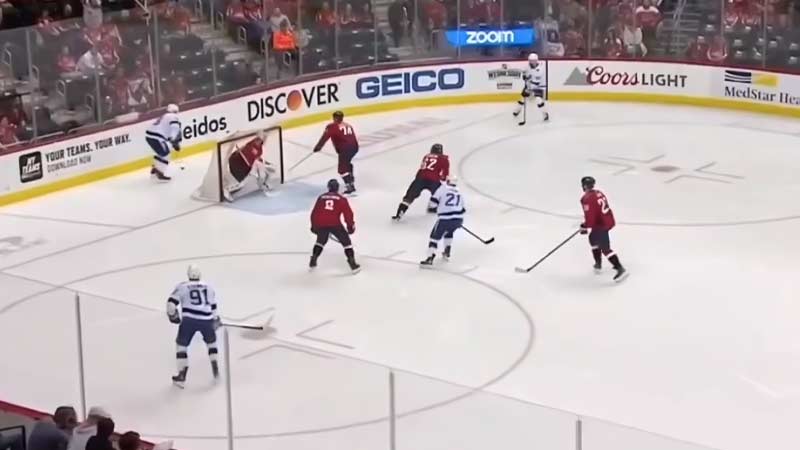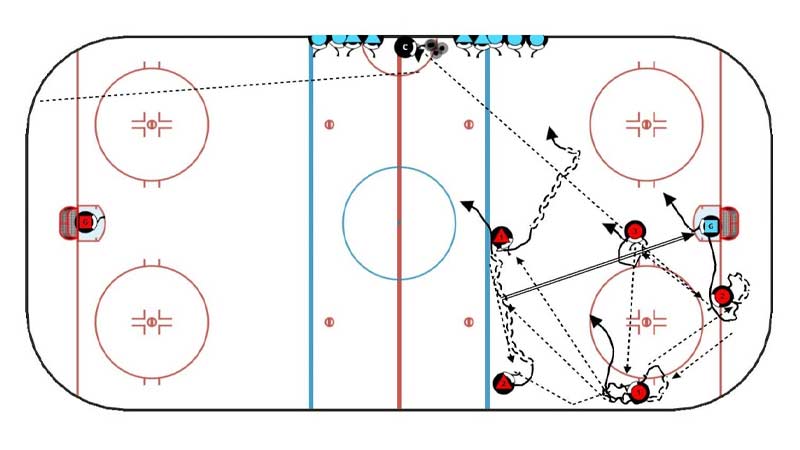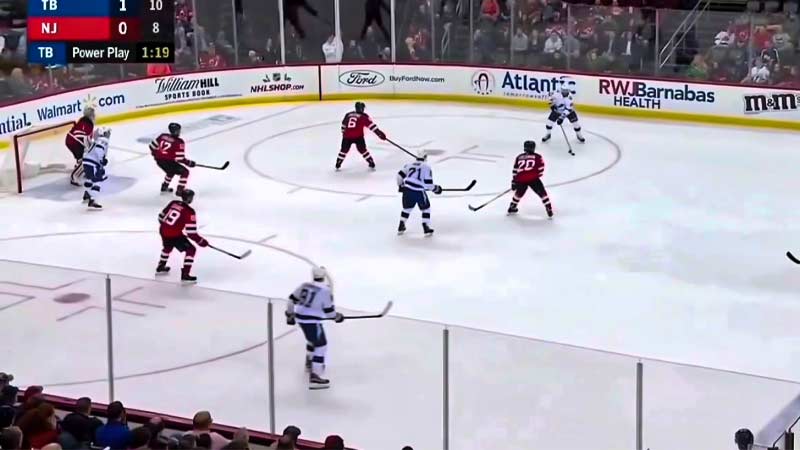In hockey, the strategic use of the bumper play can be a game-changer. This tactic, centered around positioning a player in the middle of the ice, opens up quick scoring opportunities by facilitating seamless passes and shots on goal.
The bumper player’s versatility and strategic placement can shift the momentum of a game, often leading to crucial scoring chances that can turn the tide in favor of the team.
By capitalizing on the bumper play, teams can exploit the opposing defense’s vulnerabilities and create dynamic offensive plays.
This tactical approach, although not a conventional position in hockey terminology, plays a pivotal role in enhancing scoring efficiency and overall gameplay.
Understanding the nuances of the bumper play can give teams a competitive edge on the ice, unlocking strategic advantages that can lead to success in crucial moments of the game.
Understanding Bumper Play in Hockey
The Role of the Bumper Position
The bumper position in hockey holds a key role in offensive strategies, particularly during power plays. Positioned in the high slot area, a player taking on the bumper role becomes a pivotal figure.
They act as a facilitator, orchestrating plays, delivering quick shots, and generating chaos in front of the net.
The term “bumper” reflects the player’s function to bump the puck to teammates or fire shots towards the goal, offering a dynamic and versatile presence on the ice.
Strategic Placement on the Ice
Placing a player strategically in the bumper position can significantly impact a team’s offensive strategies. With a skilled forward in this role, teams can unsettle the opponent’s defense, leading to better scoring chances.
The bumper player’s agility, passing skills, and ability to create congestion in front of the net bring unpredictability to offensive plays and increase the team’s goal-scoring potential.
Executing Bumper Play During the Game

Bumper Play on the Power Play
During power plays, teams strategically deploy the bumper position to enhance their offensive capabilities. Positioned in the high slot area, the bumper player acts as a pivotal link, connecting different zones of attack.
By executing quick shots, providing crucial passes, and creating chaos in front of the net, the bumper contributes significantly to the team’s scoring opportunities.
This strategic placement disrupts the opponents’ defensive setup, increasing the unpredictability of offensive plays and improving the chances of converting opportunities into goals.
Bumper Play During Regular Play
Incorporating the bumper play into regular gameplay benefits teams by opening up unique scoring opportunities and offensive strategies.
The bumper player can fill gaps between opponents, serving various roles like puck supporter, deflector, shooter, high screen decoy, or puck recovery option.
This dynamic tactic adds versatility to team strategies and helps create more scoring chances and maintain pressure on opponents during the game.
Formation and Strategies
The 1-3-1 Formation Explained
The 1-3-1 formation in hockey, commonly used during power plays, consists of the point, two wingers, a player down low, and the pivotal bumper position.
The point player typically positions at the top of the umbrella formation, with one player down low near the handle, and the bumper in the high slot area. This setup allows for multiple strategic options to create high-danger scoring opportunities.
The bumper occupies a central role in this formation, providing a link between the players screening the goalie and the defensemen at the point, ensuring quick shots and proficient passing capabilities.
Offensive Strategies and Bumper Position
Utilizing the bumper play in offensive tactics can boost a team’s scoring opportunities during power plays. Placing the bumper in the high slot area forces opponents to adjust their defense, allowing for unpredictable plays to originate from this crucial position.
Through swift shots, accurate passes, and generating confusion near the net, the bumper player elevates the team’s offensive potential and maintains pressure on the opposition.
These tactical moves not only enhance scoring prospects but also introduce dynamic gameplay that may surprise opponents, resulting in more effective goal scoring.
Defensive Tactics Against Bumper Play

Recognizing Bumper Play Patterns
Understanding and identifying bumper play patterns is essential for hockey teams to counter this offensive strategy effectively.
Bumper play typically includes a player positioned in the high slot, posing a threat by being ready for quick shots or passes.
By observing player positions and puck movement, defenders can recognize potential bumper play setups and adapt defensive tactics accordingly. This awareness enables teams to disrupt the bumper’s chances and reduce scoring opportunities proactively.
Effective Counterstrategies
Implementing effective counterstrategies is crucial in hockey to contain bumper play and thwart offensive attacks. Defenders can use tight coverage, aggressive stick checking, and shot blocking to limit the bumper’s influence.
Communication among defenders is essential for coordinated movements and quick responses. Strategic positioning, active engagement, and cohesive teamwork help teams mitigate the impact of bumper play and maintain defensive solidity against scoring attempts.
How Does the Bumper Position Work on the Power Play?
The bumper position in hockey’s power play formation plays a crucial role in orchestrating offensive plays to create scoring opportunities.
Positioned in the high slot area, the bumper acts as a focal point for coordinating puck movement and player positioning to capitalize on gaps in the opposing defense.
Strategic Importance
The bumper player’s presence disrupts the opponent’s defense strategy by strategically positioning themselves and forcing defenders to make tough decisions, creating chances for their team.
They have a fluid role that involves adapting to the game’s changing dynamics, moving smoothly between central and perimeter areas to unsettle the opposition’s defense.
Offensive Capabilities
The bumper in the high slot has various passing options and can choose to pass to teammates in scoring positions or take a quick shot on goal.
By strategically positioning themselves, they have shooting lanes from different angles, creating a shooting threat that forces defenders to consider both passing and shooting threats during power plays.
Tactical Flexibility
Rotational flexibility for the bumper player in power plays enhances unpredictability and can create defensive gaps.
The bumper player’s role involves making crucial decisions, coordinating plays accurately, and adjusting strategies to optimize team performance in power play scenarios, utilizing their keen vision and spatial awareness.
Why Bumper Play is a Game-Changer?
Creating Scoring Opportunities
Bumper play in hockey is crucial for creating scoring chances as it involves strategic positioning in the high slot area, enabling quick shots on goal, key passes, and disruption of the opponent’s defense.
This disruption often leads to chaos in front of the net, making it challenging for the goaltender to defend against shots.
Examples of Successful Bumper Play Goals
Bumper play goals in hockey demonstrate the effectiveness of this strategic position, allowing players to swiftly take shots on goal and surprise opponents.
Teams leverage this position for dynamic offensive plays by swiftly moving the puck around the high slot, with the bumper player as a key element in their strategy.
Analyzing replays of successful bumper play goals offers valuable insights into its impact on game outcomes.
Tips for Players Assuming the Bumper Position
Developing the Necessary Skills
To excel as a bumper player in hockey, mastering skills like quick decision-making, precise shooting, and hand-eye coordination is crucial.
It’s important to have a keen sense of timing and game awareness to capitalize on scoring chances effectively.
Practice with deflections, tip-ins, and redirecting shots up close can greatly enhance a bumper player’s performance near the net.
Positioning and Team Coordination
The bumper player’s success relies on precise positioning and teamwork, specifically in the high slot area.
Communication with teammates is key to creating scoring opportunities and taking advantage of opponent weaknesses. Knowing each teammate’s strengths and strategies aids in making quick decisions that can result in goals during gameplay.
Frequently Asked Questions
What is a bumper play in hockey?
The bumper play in hockey refers to a strategic offensive position where a player positions themselves in the high slot, acting as a pivot point for creating scoring opportunities and disrupting opponent defenses. It is crucial for generating chances during power plays and regular gameplay.
Why is the bumper position important in hockey?
The bumper position is vital in hockey because it allows the team to maintain offensive pressure, create scoring chances, and keep the defense off-balance. Players in the bumper role need to have specific skills like quick decision-making, precise shooting, and the ability to read the game effectively.
What is the role of the bumper player during power plays?
The bumper player is crucial during power plays, aiding the team’s offense by creating scoring chances and keeping possession in the offensive zone. Effective communication and knowledge of teammates’ responsibilities are key for optimizing the bumper’s impact on the game.
How can players excel in the bumper position?
Players looking to excel in the bumper position should focus on improving their decision-making skills, positioning on the ice, and teamwork. They need to adapt to game conditions, anticipate plays, and work cohesively with teammates to capitalize on scoring opportunities effectively.
Why is teamwork important for bumper players?
Teamwork is essential for bumper players as it allows for coordination, offensive strategies, and executing scoring plays. Effective communication, understanding roles, and supporting teammates are key elements for successful bumper play.
Conclusion
The bumper play in hockey serves as a vital component for both offensive strategies and defensive tactics. Players in the bumper position play a crucial role in creating scoring opportunities and disrupting opponent defenses, especially during power plays.
By mastering specific skills like quick decision-making and precise shooting, bumper players can significantly impact the outcome of a game.
Effective positioning and seamless coordination with teammates are key elements for success in the bumper position.
Communication and understanding of teammates’ roles are essential for maximizing scoring chances. Mastering the bumper play can elevate a team’s performance and lead to greater success on the ice.








James Felix